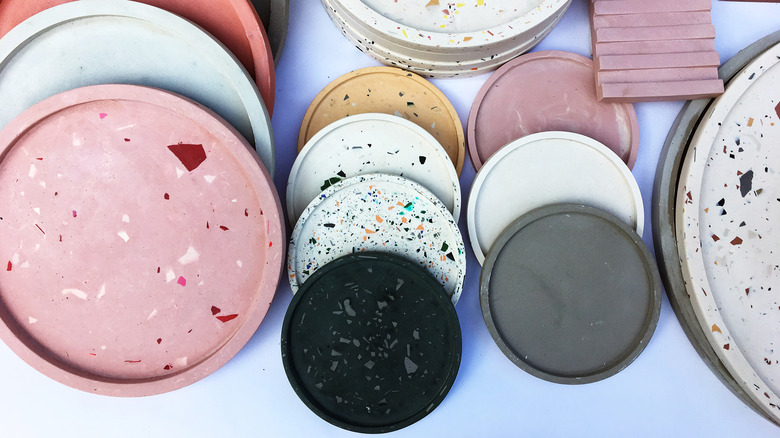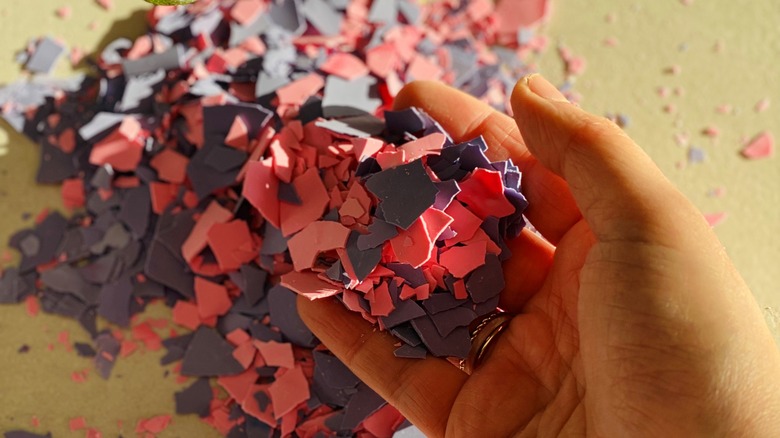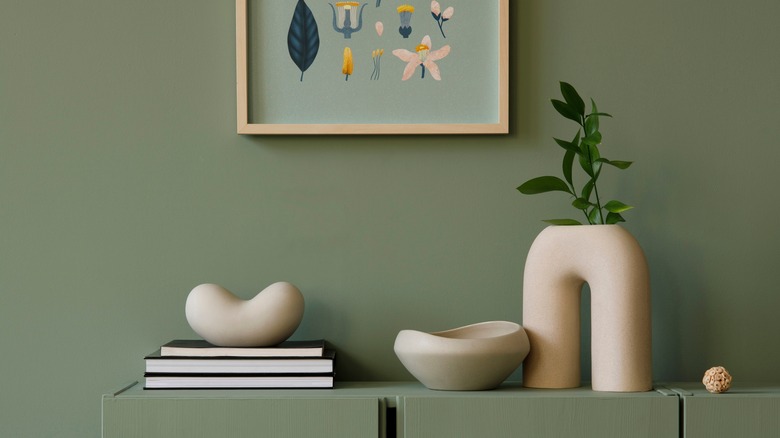Jesmonite Is The Sustainable Home Decor Trend You Need To Try Now. Here's How To Pull It Off
Looking to invest in some new home décor that breaks the mold? If you've never heard of the awesome and versatile material called jesmonite, you're in for a treat. Jesmonite décor has a solid, heavy, and satisfying feel, almost like concrete. Unlike concrete, however, jesmonite also has a silky, smooth surface and is more durable and affordable, similar to a resin or acrylic décor piece. If you were alive in the early 1980s, you might even catch some déjà vu from holding this material!
Like most trends, jesmonite has cycled back around into the popular consciousness, finding a comfy spot once again in our bookshelves, vanities, and coffee tables. But the resurgence of jesmonite isn't just a vintage revival; it's also a big step towards sustainable interior design. If you want to create a playful, trendy, and eco-friendly home, invest in some jesmonite décor. Here's what you should know about this fascinating material and how to style it in your home.
What is jesmonite?
Jesmonite is formed by combining a gypsum mineral base with water-based acrylic resin. Commonly used as an alternative to fiberglass and acrylic, there are several types of jesmonite all with different purposes in construction and household products. Some common names for different jesmonite materials include AC100, AC730, and AC200. When it cures, the result is a chunky, smooth matte plaster-like material that can be customized with endless shapes and fillings. Jesmonite is a versatile material for artists to work with. It can be infused with more jesmonite flakes and chips for a terrazzo-like appearance or swirled with other colors to create a faux marble effect. It can also be texturized to look like stone or concrete when it's completed.
Jesmonite isn't perfect but it is much more sustainable than other building and household materials. That's because jesmonite is mostly made from water-based ingredients and the natural mineral gypsum. Gypsum is the most common mineral on Earth, and it's easy to mine near the surface of Earth's crust, so workers aren't put at risk, and it won't be depleted any time soon. Jesmonite is energy efficient to produce and can last through a lot of wear and tear in your home. While jesmonite does contain acrylic, a form of plastic, it is better for the environment than décor made entirely of plastic. If and when it is time to dispose of a jesmonite piece, it's recyclable!
How to style jesmonite just right
Jesmonite is an extremely versatile material, so you'll commonly find coasters, jewelry dishes, plant pots, candleholders, and more made with this satisfying substance. This material plays well with the squiggly décor trend, reminiscent of the '80s and '90s. Curved jesmonite pieces like bowls and U-shaped vases can help to break up the rigidity of a bland, straight-edge room, especially if they're in a playful, bright color or fun terrazzo pattern. If you prefer to use neutrals in home décor and interior design, that doesn't mean you can't engage in the jesmonite trend. In a natural shade or stone-like texture, jesmonite vases and sculptures can mimic pricier pieces and make your space feel luxurious without breaking the bank.
Jesmonite décor is best used for adding interest to a space in small doses, displayed proudly on a coffee table, dresser, or bookshelf. With that being said, these durable pieces deserve to be shown off and put to use! Part of the experience of jesmonite is its unique texture and weight, so invest in décor that will allow people to interact with the pieces. Coasters and catch-all bowls are a perfect example of this, and they're sure you earn you some compliments when curious guests visit your home!


